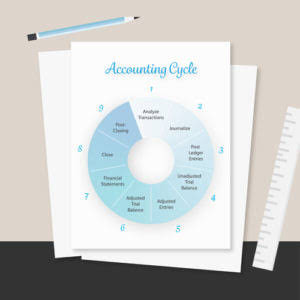
However, this can also lead to increased scrutiny and the need for additional disclosures, as regulatory bodies seek to ensure that the representation of financial positions is meaningful and informative. Compliance with IFRS can streamline international operations but might require a paradigm shift from U.S. practices for those accustomed to U.S. Under U.S. GAAP, companies are allowed to use the Last-In, First-Out (LIFO) method for inventory valuation, which assumes the most recently acquired items are sold first. The presentation of financial statements under IFRS and US GAAP encompasses specific formats and components.
Why Is There Opposition to Converging GAAP and IFRS?

This means that it could take a great deal of time to implement a new system of accounting rules and standards across the board. The new set of standards that will be adopted will need to provide transparency and full disclosure similar to the U.S. standards, and it should also ensure broad acceptance. For instance, GAAP allows companies to QuickBooks use either first in, first out (FIFO) or last in, first out (LIFO) as an inventory cost method. Deciding which set of standards to use depends on whether your company operates in the US or internationally.
Which is better: GAAP vs. IFRS?
This framework ensures that the substance of the transaction is reported, which can lead to greater flexibility but may also result in inconsistency and variability in application. GAAP is more rules-based, providing detailed rules and specific criteria to ensure consistency and comparability across entities. The U.S. GAAP framework often results in more complex and prescriptive guidelines, which can reduce opportunities for interpretation but provides less flexibility in application. GAAP compliance is required for publicly traded corporations in the United States. This means that the financial statements of these companies must adhere to all GAAP principles and standards.
An Overview of GAAP vs. IFRS
In the United States, the FASB does not have a separate definition for property used as an investment only. This will result in an increase in capital flow and international investments, which will further reduce interest rates and lead to Bookstime economic growth for a specific nation and the firms with which the country conducts business. They also have fewer earnings management, more timely loss recognition, and more value relevance in accounting amounts compared to domestic firms following the GAAP. Therefore, firms adhering to the IFRS generally exhibit higher accounting quality than when they previously followed the GAAP.
- All participants must be at least 18 years of age, proficient in English, and committed to learning and engaging with fellow participants throughout the program.
- The purpose of GAAP is to help investors analyze financial data and compare different companies to make informed financial decisions.
- Our mission is to empower readers with the most factual and reliable financial information possible to help them make informed decisions for their individual needs.
- When reporting fixed assets, IFRS tends to be more flexible, allowing both a cost model and a revaluation model.
- It is also attractive because eliminating standards on either side is counterproductive.
What Is the Difference Between the IASB and FASB?

Public companies must follow GAAP when preparing their financial statements, which is also widely used in governmental accounting. GAAP share certain underlying assumptions, such as the accruals basis of accounting and the going concern basis. However, convergence efforts have been made to reduce the differences between them.
- If a financial statement is not prepared using GAAP, investors should be cautious.
- If it is within your budget, your organization can hire an expert financial lawyer to help you screen accountant prospects throughout the interview process.
- Our platform features short, highly produced videos of HBS faculty and guest business experts, interactive graphs and exercises, cold calls to keep you engaged, and opportunities to contribute to a vibrant online community.
- The Financial Accounting Standards Board’s original mission has always been to establish the U.S.
- If companies were able to pick and choose what information to disclose, it would be extremely unhelpful for investors.
- The point of IFRS is to maintain stability and transparency throughout the financial world.
- Nearly all S&P 500 companies report at least one non-GAAP measure in their financial statements.
- Perhaps the most notable difference between GAAP and IFRS involves their treatment of inventory.
- Under U.S. GAAP, companies are allowed to use the Last-In, First-Out (LIFO) method for inventory valuation, which assumes the most recently acquired items are sold first.
- While both frameworks now follow a similar approach, GAAP might still throw you a curveball with some industry-specific rules.
- On the other hand, GAAP is much more prescriptive as far as form is concerned.
- The distinction between IFRS and US GAAP prominently manifests in disclosure and reporting requirements, which are crucial for ensuring transparency and providing detailed insights into a company’s financial health.
Still, caution should be used, as there is still leeway for number distortion under many sets of accounting principles. While non-publicly traded companies aren’t required to follow GAAP, it is still highly regarded by lenders and creditors. Most financial institutions require annual GAAP-compliant financial statements as a part of their debt covenants when issuing business loans, leading many U.S. companies to adopt GAAP. IFRS and GAAP represent the two primary sets of accounting standards used across the globe. International Financial Reporting Standards (IFRS), issued by the International Accounting Standards Board (IASB), provide a universal framework for preparing and disseminating is gaap used internationally financial information.
Do you already work with a financial advisor?

Both GAAP and IFRS require companies to disclose other comprehensive income (OCI), which includes certain gains and losses not realized through the income statement. Under IFRS, OCI can be part of a single combined statement of profit and loss and OCI, or it can be placed in a separate statement linked closely with its income statement. US GAAP allows a similar presentation but also mandates that items of OCI be presented net of related tax effects. While GAAP and IFRS both pertain to how financial documents are structured and filed—and they both often include comprehensive income reporting—there are significant differences.

It is important because it ensures that financial reporting is transparent and consistent from one company to another. Controversy has almost inevitably arisen when one country adopts another country’s accounting methods. Part of the reason it is so difficult to generate one set of universally accepted accounting standards is the basis on which the standards are set. The GAAP utilized in the U.S. are rules-based, while the IFRS are principles-based. The two differing fundamental approaches make it difficult to reconcile standard practices. Despite the difficulties posed, a basic, universally accepted means of documenting and publishing accounting information is sought on an ongoing basis.
Your accounting standard, therefore, determines where on your financial documents you must list intangible assets, which affects your balance sheet’s final record. Consequently, the theoretical framework and principles of the IFRS leave more room for interpretation and may often require lengthy disclosures on financial statements. On the other hand, the consistent and intuitive principles of IFRS are more logically sound and may possibly better represent the economics of business transactions. The best way to think of GAAP is as a set of rules that companies follow when their accountants report their financial statements. These rules help investors analyze and find the information they need to make sound financial decisions. Arguments against accounting standards convergence are the unwillingness of the different nations involved in the process to collaborate.







